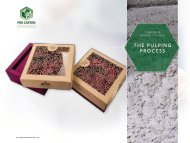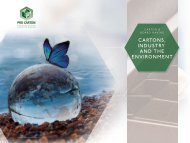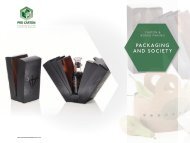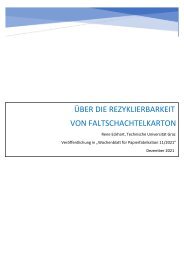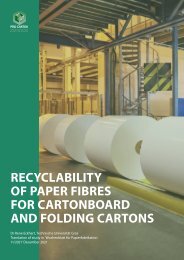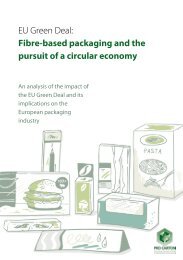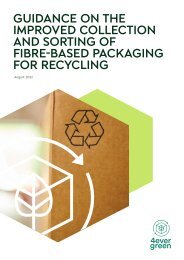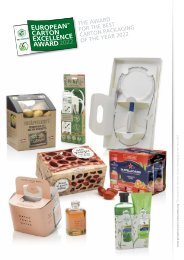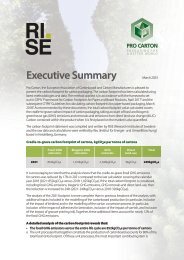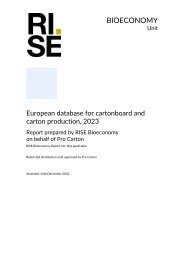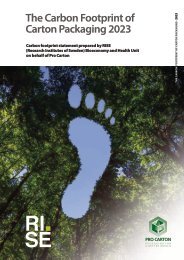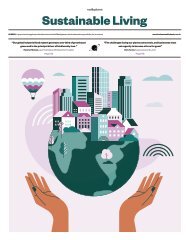Pro Carton Fact File – Module 3 – Forests – The Raw Material for Cartonboard
You also want an ePaper? Increase the reach of your titles
YUMPU automatically turns print PDFs into web optimized ePapers that Google loves.
SUSTAINABLY MANAGED FORESTS<br />
WHO OWNS THE FORESTS?<br />
In the major fibre producing countries - Finland and Sweden - two-thirds of <strong>for</strong>ests are privately owned by very large<br />
numbers of small land owners. Private ownership is also common in other countries together with a significant<br />
ownership by the state and other public bodies. Overall, the paper and board industry owns less than 10% of the<br />
<strong>for</strong>est area.<br />
CARTON &<br />
BOARD MAKING<br />
FORESTS-<br />
THE RAW<br />
MATERIAL FOR<br />
CARTONBOARD<br />
IF PAPER AND BOARD CAN BE RECYCLED WHY DO WE CUT DOWN TREES?<br />
A recycling rate of 84.2% means we need replenishment with fresh fibre to compensate <strong>for</strong> the gap of lost paper and<br />
board that is never recycled. For example tissues <strong>for</strong> personal hygiene, food contaminated packaging, tobacco paper,<br />
archived material, books and storage boxes consumers keep at home. <strong>The</strong>re is also a certain percentage of material lost<br />
which consumers do not make available <strong>for</strong> recycling. Such loss can only be replaced by new fibres from wood.<br />
Specific customer needs require additional virgin fibre. For example direct food contact requires virgin fibre material or<br />
specific requirements <strong>for</strong> stiffness and whiteness levels.<br />
WHAT SPECIES OF TREES ARE USED FOR PAPER AND BOARD PRODUCTION?<br />
In northern Europe the main species are spruce, pine and birch.<br />
In Spain and Portugal eucalyptus is grown commercially.<br />
THE CARTON PACKAGING FACT FILE<br />
All contents copyright © BPIF 2017.



